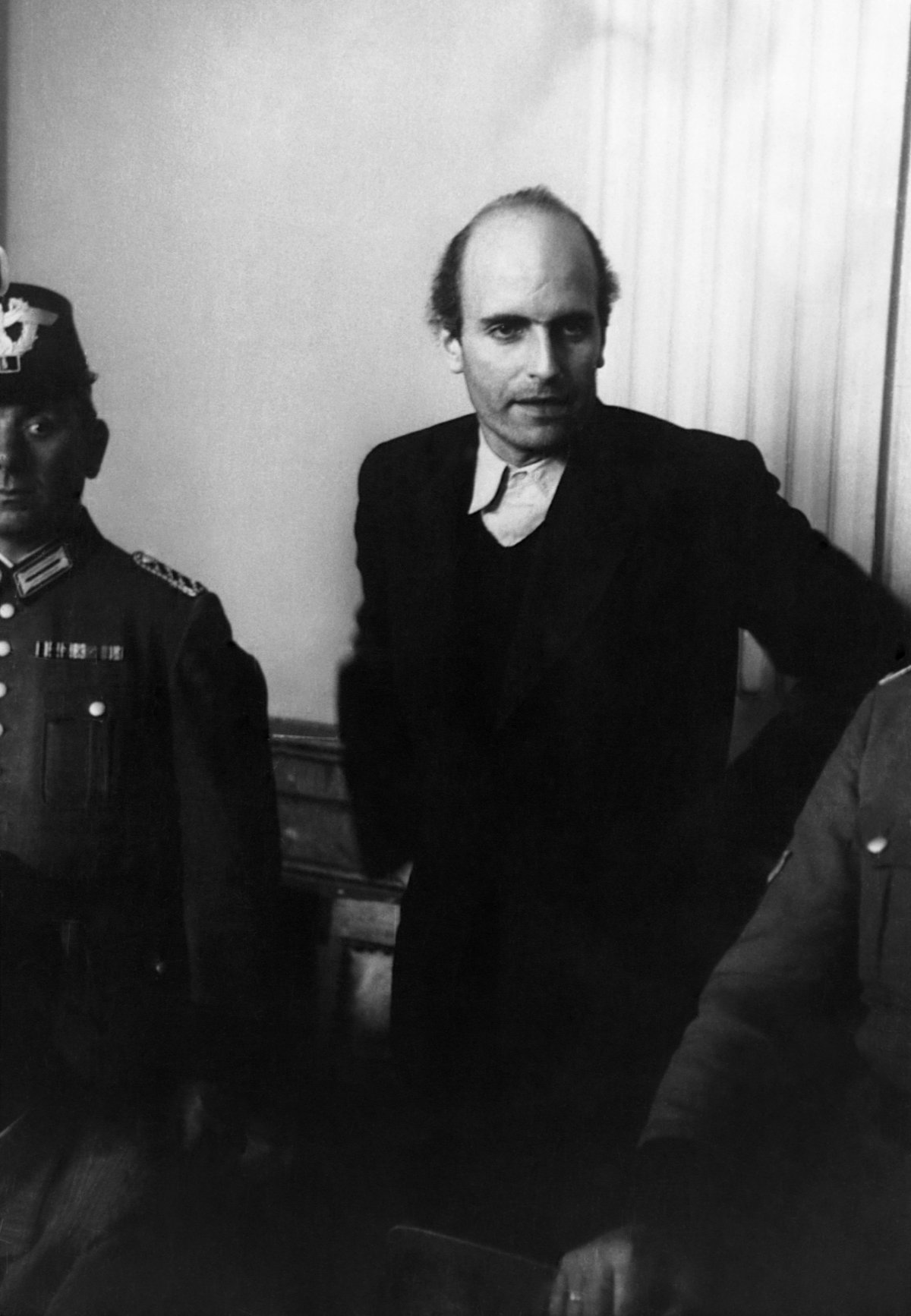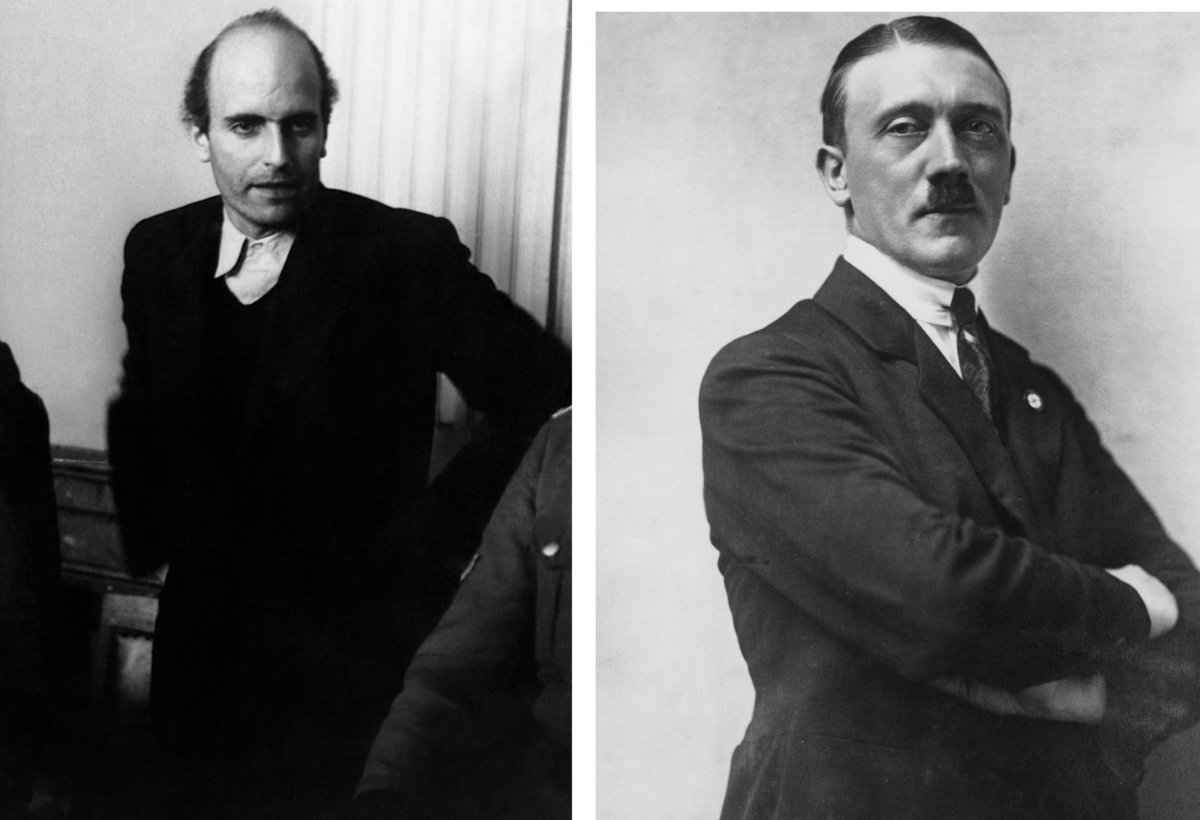Munich — The Edge of War is the brand new British war-drama film on Netflix, based on the novel of the same name by Robert Harris. The gripping film is set around Neville Chamberlain's (played by Jeremy Irons) and the Allied Powers' road to appeasement and the signing of The Munich Agreement of 1938 by Germany's Adolf Hitler (Ulrich Matthes), Great Britain, France, and Italy.
The agreement allowed for the annexation of Sudetenland areas of Czechoslovakia in a bid to prevent an all-out war across Europe. However, Hitler would break the agreement six months later and invaded Czechoslovakia on March 15, 1939.
The film follows the story of a British civil servant named Hugh Legat (George MacKay) and a German diplomat called Paul von Hartmann (Jannis Niewöhner), who is based on the German diplomat Adam von Trott zu Solz. Working together, the duo attempted to get information to the British Prime Minister Neville Chamberlain, to prove Hitler had no intention of adhering to the Munich agreement.
In the film, a disillusioned Hartmann is part of a conspiracy to remove Hitler from power but was there really a plan to assassinate Hitler? Newsweek has everything you need to know about the events in Munich — The Edge of War.
Was There Really a Plan To Assassinate Hitler?
Yes, as seen via Paul von Hartmann in Munich — The Edge of War there really was a plan to assassinate Hitler. In fact, there were many other attempts, particularly during The Second World War.
All of the attempts were unsuccessful, with Hitler ultimately committing suicide on April 30, 1945, as the Soviet Army advanced on his bunker in Berlin.
Munich — The Edge of War is a blend of historical fact and fiction, with many of the characters created for dramatic purposes, however, the historical context in which the film is set unfortunately rings true.
The character of Paul Von Hartmann is not real but is loosely based on Adam von Trott, an Oxford graduate, German lawyer, and diplomat.
Trott was part of the anti-Hitler resistance movement in the German foreign office, joining forces with the anti-Nazi Kreisau Circle of Helmuth James Graf von Moltke and Peter Yorck von Wartenburg in 1940.
Trott's friendship with fellow Oxford student, A.L. Rowse inspired Harris's novel and the character Hugh Legat, a young Whitehall secretary. In real life, Trott and Rowse did not work together and share intelligence to convince Chamberlain to change the Munich Agreement but they did have a close friendship.
However, in early June 1939, just three months before the Munich Agreement was signed, Trott did meet with Lord Halifax, the foreign secretary, and Prime Minister Neville Chamberlain to encourage him to take a harsher stance against Hitler and to prevent the outbreak of war.
In Munich — The Edge of War Hartmann has plans of his own to assassinate Hitler but ultimately failed. In real life, Trott was involved in German army officer Claus von Stauffenberg's 1944 plot to assassinate the Führer, which also failed. If the plot succeeded, Trott was going to be appointed Secretary of State in the Foreign Office and lead negotiator with the Western Allies.
Known as the July Plot, Stauffenberg sought to remove Hitler from power over frustrations Germany was losing the war. Along with his conspirators, he wanted to establish power in Berlin, set up a pro-Western government and save Germany from defeat in the war.
With the help of Henning von Tresckow, the man behind the Valkyrie plan which sought to overthrow Hitler's government and hand power to German Army officers, Stauffenberg united numerous German resistance movement members, including Trott who had also supported Operation Valkyrie. Together, they conspired on the July 20 Plot.
However, the plan failed on July 20, 1944. Stauffenberg did manage to successfully place one of his suitcase bombs in the same room as Hitler at the Wolf's Lair, Hitler's military headquarters in East Prussia but when the bomb exploded, Hitler was shielded by one of the heavy, solid-oak conference table legs and walked away only slightly injured, records The Spiegel.
In total, only four people were killed, but Stauffenberg was under the impression nobody had survived and headed for Berlin, where he attempted to launch a military coup against the Nazi leaders.
However, Joseph Goebbels, the Reich Minister of Propaganda was quick to announce over the radio Hitler had survived the attack, and moments later, Hitler spoke on state radio, confirming the assassination attempt had failed.
Unlike Hartmann in Munich — The Edge of War, in the end, Trott was executed. He died on August 26, 1944, at Plötzensee prison. In total, 7,000 were arrested and 4,980 were executed for their support or involvement in the 20 July plot. Other conspirators committed suicide, records William Shirer in The Rise and Fall of the Third Reich.

There are six well-documented plans to assassinate Hitler as part of the German resistance to Nazism. According to History.com, the first was in 1921 at a Munich beer hall, nearly 20 years before the start of World War II. The failed attempt became known as the Beer Hall Putsch.
The second was in 1938, known as the Maurice Bavaud Plot. Theology student Bavuad bought a pistol and stalked Hitler across Germany, eventually coming face to face with him on November 9, 1938, in Munich where Hitler was celebrating the anniversary of the Beer Hall Putsch but he ended up not firing one single shot. Bavaud was soon arrested and executed in May 1941 in Berlin's Plötzensee Prison.
In 1939, communist Georg Elser planted a bomb that was set to explode on November 8, 1939, at 9:20 p.m., roughly midway through Hitler's speech to commemorate the Beer Hall Putsch. However, Hitler finished his speech early to return to Berlin and the bomb exploded without him in the building. In total eight people were killed.
In 1943, Henning von Tresckow's Brandy Bomb plan to blow up in Hitler's plane failed, due to a defective fuse.
The fifth well-known attempt to assassinate Hitler before the July Plot was in March 1943. German army officer Rudolf von Gersdorff was prepared to detonate a bomb standing next to Hitler at an exhibition showing the German army's strength after learning security was too tight inside the building. However, Hitler left the exhibition before the bomb could explode and Gertsdorff was forced to defuse it in a bathroom.
In total 15 or more attempts to kill Hitler are known to have been made between 1938 and 1945, reports Prospect Magazine.
Munich — The Edge of War is streaming on Netflix now.

Uncommon Knowledge
Newsweek is committed to challenging conventional wisdom and finding connections in the search for common ground.
Newsweek is committed to challenging conventional wisdom and finding connections in the search for common ground.
About the writer
Molli Mitchell is a Senior SEO TV and Film Newsweek Reporter based in London, UK. Her focus is reporting on ... Read more
To read how Newsweek uses AI as a newsroom tool, Click here.








